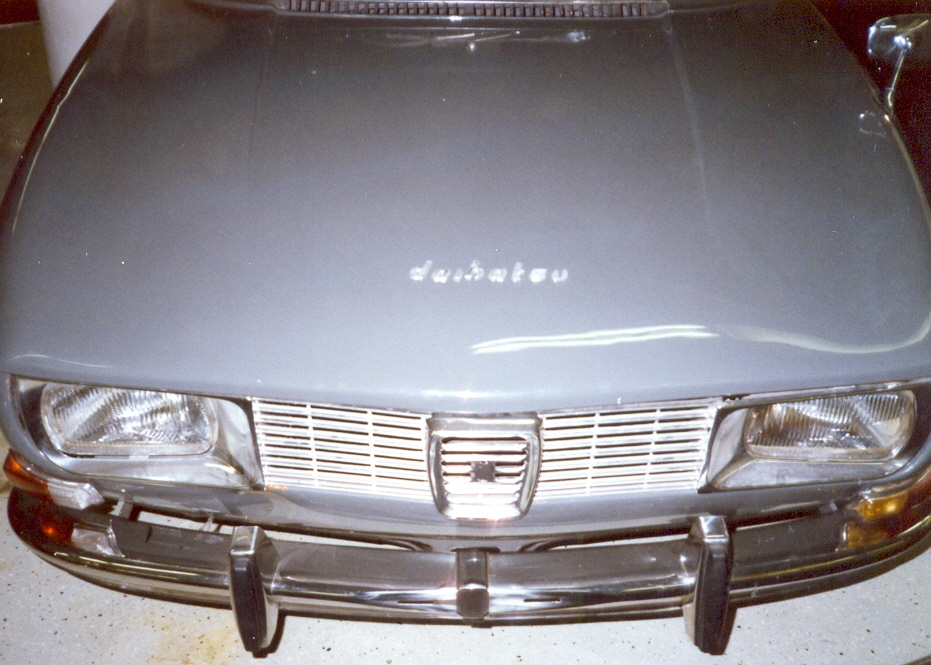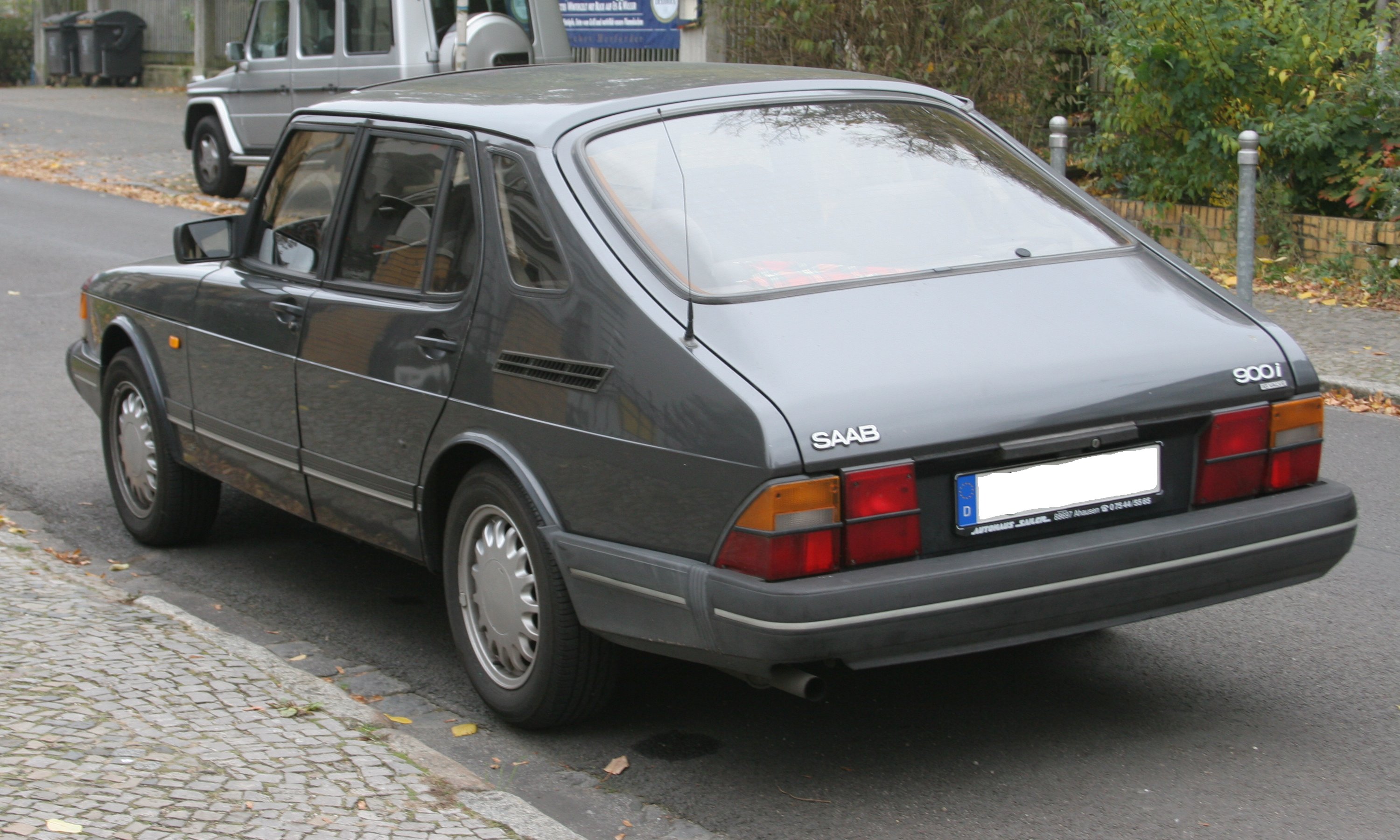|
Toppola
Toppola is a brand of camper shell originally made for the Saab 99 combi coupé. By removing the hatch and putting on the Toppola a car could be converted to a campervan in about 15 to 30 minutes. The top can easily be lifted off and the hatch door reattached, so the car can be used without the Toppola. The unit is small, but features full standing height (2.0 m) and a 170 by 200 cm bed. It could be fitted with a complete kitchen and even a heater for use during winter. The total weight addition is about . The Toppola was first made for the Saab 99, but later also Saab 900, Saab 900 (NG), Saab 9000, Saab 9-3, Ford Sierra The Ford Sierra is a mid-size car or large family car manufactured and marketed by Ford Europe from 1982-1993, designed by Uwe Bahnsen, Robert Lutz and Patrick le Quément — and noted for its aerodynamic styling producing a drag coefficien ... and Scorpio. Production has stopped in 2006; SCANDO was looking for someone to take over production of th ... [...More Info...] [...Related Items...] OR: [Wikipedia] [Google] [Baidu] |
Saab 900 (NG)
The Saab 900 is a mid-sized automobile which was produced by Saab from 1978 until 1998 in two generations; the first from 1978 to 1993, and the second from 1994 to 1998. The first-generation car was based on the Saab 99 chassis, though with a longer front end . The 900 was produced in 2- and 4-door sedan, and 3- and 5-door hatchback configurations and, from 1986, as a cabriolet (convertible) model. There were single- and twin-Zenith carburettor; fuel injected, and turbocharged engines, including both Full Pressure Turbo (FPT), and, in European models during the early 1990s, Low Pressure Turbos (LPT). Saab 900 "Classic" Overview The Saab 900 is a front-engine, front-wheel-drive mid-size car with a longitudinally mounted, 45-degree slanted, inline four-cylinder engine, double wishbone front suspension and beam-axle rear suspension. It was originally introduced on 12 May 1978, for the 1979 model year. Sales commenced in the fall of 1978. Like its predecessor the 99, the ... [...More Info...] [...Related Items...] OR: [Wikipedia] [Google] [Baidu] |
Saab 900
The Saab 900 is a mid-sized automobile which was produced by Saab from 1978 until 1998 in two generations; the first from 1978 to 1993, and the second from 1994 to 1998. The first-generation car was based on the Saab 99 chassis, though with a longer front end . The 900 was produced in 2- and 4-door sedan, and 3- and 5-door hatchback configurations and, from 1986, as a cabriolet (convertible) model. There were single- and twin-Zenith carburettor; fuel injected, and turbocharged engines, including both Full Pressure Turbo (FPT), and, in European models during the early 1990s, Low Pressure Turbos (LPT). Saab 900 "Classic" Overview The Saab 900 is a front-engine, front-wheel-drive mid-size car with a longitudinally mounted, 45-degree slanted, inline four-cylinder engine, double wishbone front suspension and beam-axle rear suspension. It was originally introduced on 12 May 1978, for the 1979 model year. Sales commenced in the fall of 1978. Like its predecessor the 99, the 9 ... [...More Info...] [...Related Items...] OR: [Wikipedia] [Google] [Baidu] |
Camper Shell
A camper shell (also canopy, and sometimes called truck topper, truck cap, bed cap, box cap, or simply shell) is a small housing or rigid canopy used as a pickup truck or coupe utility accessory. The housing is usually made of fiberglass or aluminum, but sometimes wood or canvas, and is mounted atop the pickup truck's rear bed. It usually covers the entire bed of the pickup truck, and is large enough to be used for camping purposes, thus making the vehicle an RV. The top of the camper shell is usually even with or above the top of the truck cab. Even though use for camping may have been its initial purpose, it now seems most often to be used for utility and storage purposes - particularly the protection of cargo from the elements and theft. A tonneau cover is soft or hard covering over the entire truck bed that is level or slightly raised above the edge of the truck bed. See also * Campervan * KUNG * Teardrop trailer * Toppola * Travel trailer * Truck camper In North Ame ... [...More Info...] [...Related Items...] OR: [Wikipedia] [Google] [Baidu] |
900LyxToppola
9 (nine) is the natural number following and preceding . Evolution of the Arabic digit In the beginning, various Indians wrote a digit 9 similar in shape to the modern closing question mark without the bottom dot. The Kshatrapa, Andhra and Gupta started curving the bottom vertical line coming up with a -look-alike. The Nagari continued the bottom stroke to make a circle and enclose the 3-look-alike, in much the same way that the sign @ encircles a lowercase ''a''. As time went on, the enclosing circle became bigger and its line continued beyond the circle downwards, as the 3-look-alike became smaller. Soon, all that was left of the 3-look-alike was a squiggle. The Arabs simply connected that squiggle to the downward stroke at the middle and subsequent European change was purely cosmetic. While the shape of the glyph for the digit 9 has an ascender in most modern typefaces, in typefaces with text figures the character usually has a descender, as, for example, in . T ... [...More Info...] [...Related Items...] OR: [Wikipedia] [Google] [Baidu] |
Saab 99
The Saab 99 is a car which was produced by Saab from 1968 to 1984; their first foray into a larger class than the 96. While considered a large family car in Scandinavia, it was marketed as a niche compact executive car in most other markets. It was manufactured both in Sweden and Finland and was succeeded by the Saab 900, although the 99 continued to be produced alongside its successor. The Saab 90, an updated, less complex version using many 900 parts took over from the 99 in late 1984. Development On 2 April 1964, Gudmund's day in Sweden, after several years of planning, the Saab board started ''Project Gudmund''. This was a project to develop a new and larger car to take the manufacturer beyond the market for the smaller Saab 96. This new car became the Saab 99, designed by Sixten Sason and unveiled in Stockholm on November 22, 1967. The first prototypes of the 99 were built by cutting a Saab 96 lengthwise and widening it by ; this created the so-called '' Paddan'' (The toa ... [...More Info...] [...Related Items...] OR: [Wikipedia] [Google] [Baidu] |
Combi Coupé
Combi coupé is a marketing term used by Saab to describe cars with a sloping coupé-like rear hatchback. The term joins the European term "combi" (for an estate car / station wagon) with coupé. The design combines the functionality of a hatchback with the appearance of a fastback. As per a hatchback, the combi coupé incorporates a shared passenger and cargo space. Origin The term was coined by Björn Envall and first introduced with the 1974 Saab 99. Saab also discussed making a hatchback available for the Saab 96/Saab 95 model range and Envall created the prototype Saab 98. The "Combi coupé" term was later applied to the Saab 900 model line-up. Volvo also made a prototype combi coupé. File:1978 Saab 99 3-door (US), front right.jpg , Saab 99 - front File:1978 Saab 99 3 door, rear left.jpg , Saab 99 - rear Modern examples At the 2010 Paris Motor Show, Saab showed models that indicated that the Saab 9-3 The Saab 9-3 (pronounced ''nine-three'') is a compact exe ... [...More Info...] [...Related Items...] OR: [Wikipedia] [Google] [Baidu] |
Campervan
A camper van, also referred to as a camper, caravanette, motor caravan or RV (recreational vehicle) in North America, is a self-propelled vehicle that provides both transport and sleeping accommodation. The term describes vans that have been fitted out, whereas a motorhome is one with a coachbuilt body. Ambiguity with motorhome The term motorhome is sometimes used interchangeably with campervan, but the former can also be a larger vehicle than a campervan and intended to be more comfortable, whilst the latter is more concerned with ease of movement and lower cost. For example, some campervans lack built-in toilets and showers, or a divide between the living compartment and the cab. The United States term "recreational vehicle" (RV) is more analogous to motorhome than campervan. Features Campervans may be equipped either with a "pop-up" roof which is raised during camping, or a fixed roof, either shared with the commercial van that forms the basis of the vehicle (commonly ... [...More Info...] [...Related Items...] OR: [Wikipedia] [Google] [Baidu] |
Saab 9000
The Saab 9000 is an automobile produced by the Swedish company Saab from 1984 to 1998. Representing the company's foray into the executive car scene, it was developed as a result of the successes of the turbocharged 99 and 900 models. The 9000 remained in production until May 1998 and it was replaced by the Saab 9-5 in late 1997, although some final cars were produced into 1998. The Saab 9000 was only available with petrol engines, as 5-door hatchback or 4-door notchback and never as a convertible (except for one prototype) or a Coupé. Saab designed the 9000 as part of the Type Four platform in conjunction with the Italian automaker Fiat Automobiles. Fiat retailed similar derivative versions as the more basic Fiat Croma, the luxury-themed Lancia Thema, and the sports-oriented Alfa Romeo 164. Unlike the 164, which shares only the chassis, the Croma and Thema are outwardly similar to the 9000. As such, much of the bodywork appeared interchangeable between the 9000, Croma and Thema; ... [...More Info...] [...Related Items...] OR: [Wikipedia] [Google] [Baidu] |
Saab 9-3
The Saab 9-3 (pronounced ''nine-three'') is a compact executive car initially developed and manufactured by the Swedish automaker Saab. The first generation 9-3 (1998-2003) is based on the GM2900 platform, changing to the GM Epsilon platform with the introduction of the second-generation car (2003-2012). Other vehicles using this platform include the Opel Vectra, Chevrolet Malibu, and Cadillac BLS. Saab's last owners, National Electric Vehicle Sweden (NEVS), assembled the 9-3 sedan as Saab's only model. Overview The car was badged as 93 starting in the 1998 model year when Saab revised the naming strategy of their small car to match that of their larger 95. The model was marketed as 9-3, pronounced as "nine three.” The Saab 9-3 was launched in 1998 for the 1999 model year essentially as a rebadged second-generation Saab 900 (1994–1998 model) and succeeded by a redesigned 9-3 for the 2003 model year. It is not to be confused with the Saab 93 (pronounced "ninety-three"), ... [...More Info...] [...Related Items...] OR: [Wikipedia] [Google] [Baidu] |
Ford Sierra
The Ford Sierra is a mid-size car or large family car manufactured and marketed by Ford Europe from 1982-1993, designed by Uwe Bahnsen, Robert Lutz and Patrick le Quément — and noted for its aerodynamic styling producing a drag coefficient of 0.34, a significant improvement over its predecessors. The Sierra debuted at the 1982 British International Motor Show in Birmingham,Ford Sierra '''', 6 November 2007 shortly followed by the 1982 Paris Salon de l'Automobile.Salon de l'auto '' [...More Info...] [...Related Items...] OR: [Wikipedia] [Google] [Baidu] |






.jpg)
_01.jpg)
